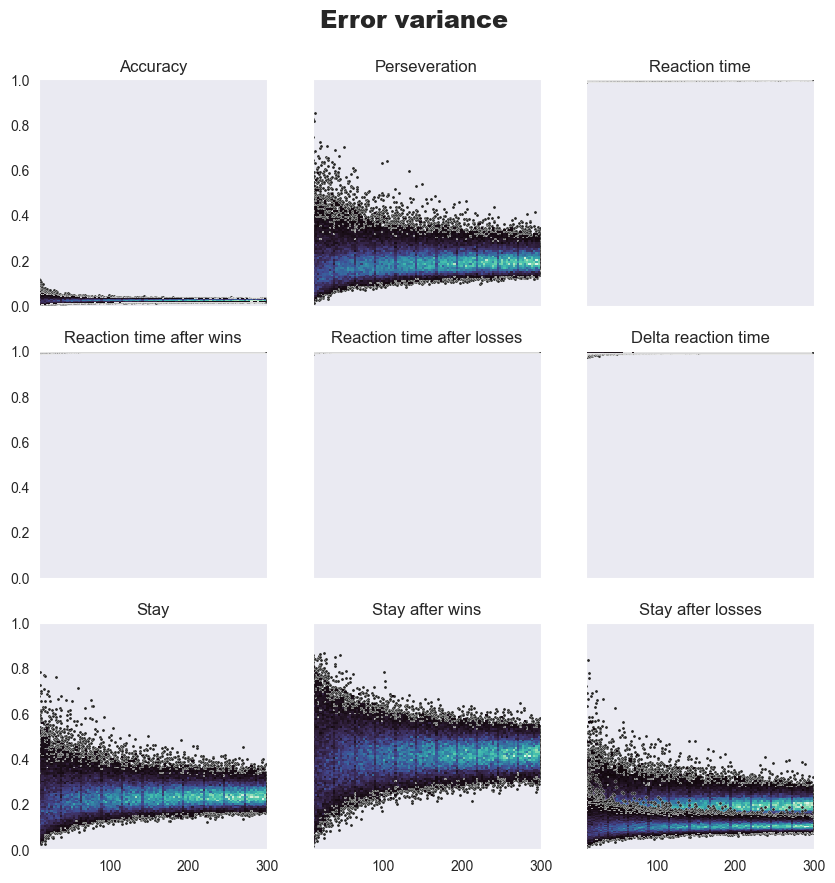EPS January 2024
Supplementary methods: Computational modelling
Supplementary Figures:

Distributions of error variance proportions of behavioural performance estimated for different sample sizes using synthetic data (calculated using behavioural measures from the joint model).
References
[1] Freyer, T., Valerius, G., Kuelz, A.-K., Speck, O., Glauche, V., Hull, M., & Voderholzer, U. (2009). Test–retest reliability of event-related functional MRI in a probabilistic reversal learning task. Psychiatry Research: Neuroimaging, 174(1), 40–46. https://doi.org/10.1016/j.pscychresns.2009.03.003
[2] Reddy, L. F., Waltz, J. A., Green, M. F., Wynn, J. K., & Horan, W. P. (2016). Probabilistic Reversal Learning in Schizophrenia: Stability of Deficits and Potential Causal Mechanisms. Schizophrenia Bulletin, 42(4), 942–951. https://doi.org/10.1093/schbul/sbv226
[3] Schaaf, J. V., Weidinger, L., Molleman, L., & van den Bos, W. (2023). Test–retest reliability of reinforcement learning parameters. Behavior Research Methods. https://doi.org/10.3758/s13428-023-02203-4
[4] Waltmann, M., Schlagenhauf, F., & Deserno, L. (2022). Sufficient reliability of the behavioral and computational readouts of a probabilistic reversal learning task. Behavior Research Methods. https://doi.org/10.3758/s13428-021-01739-7